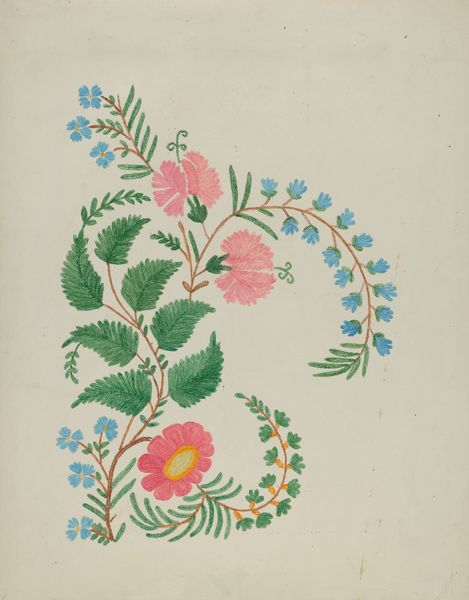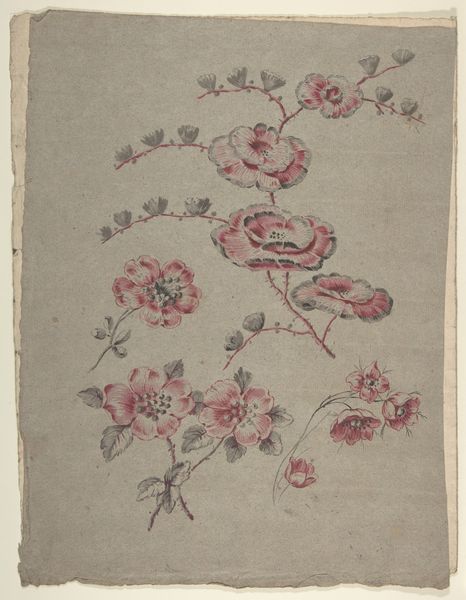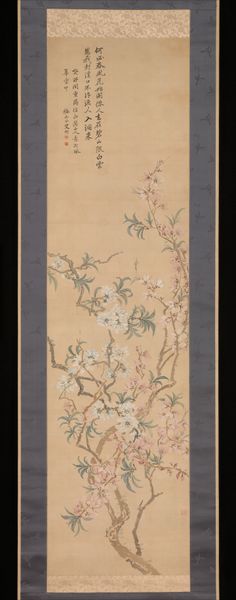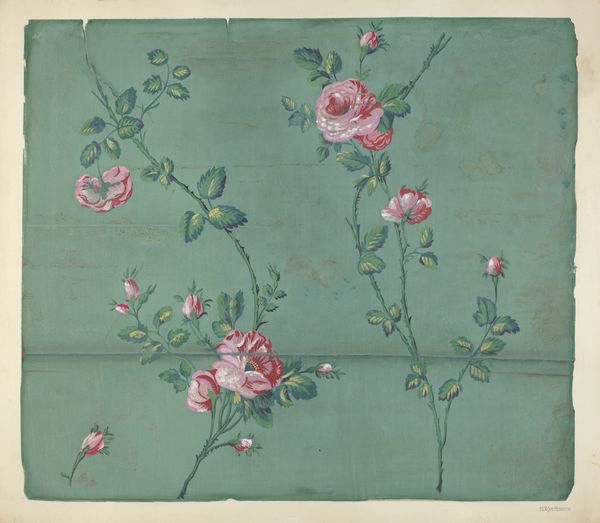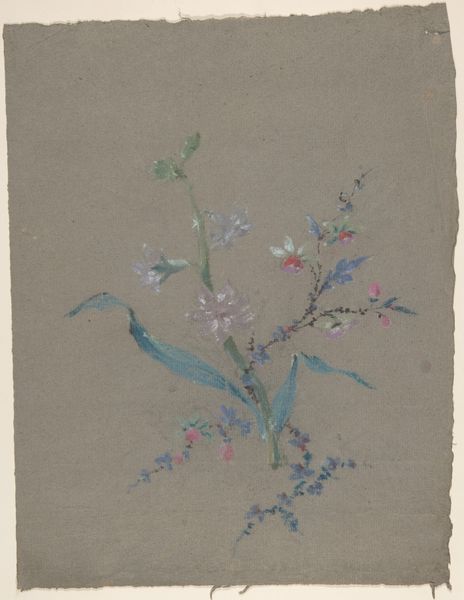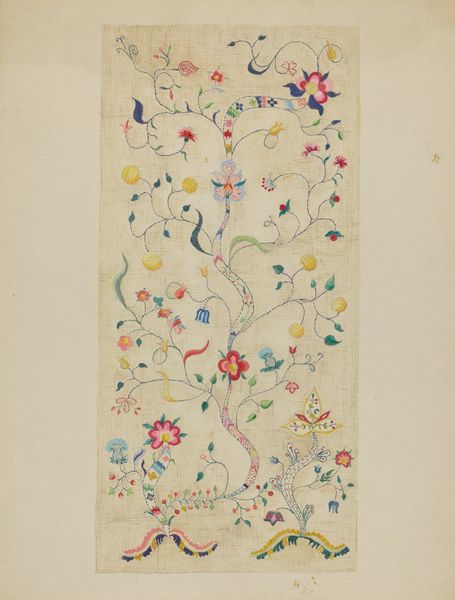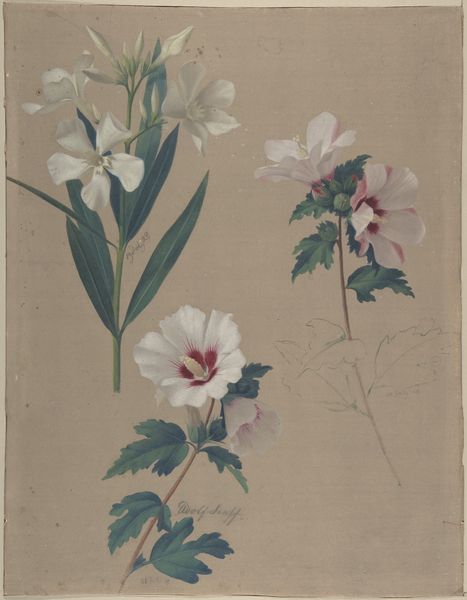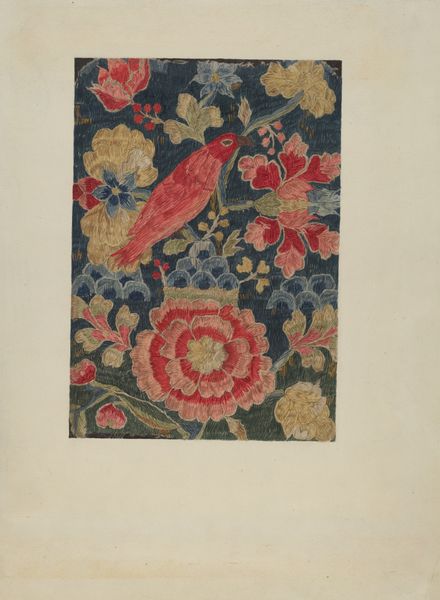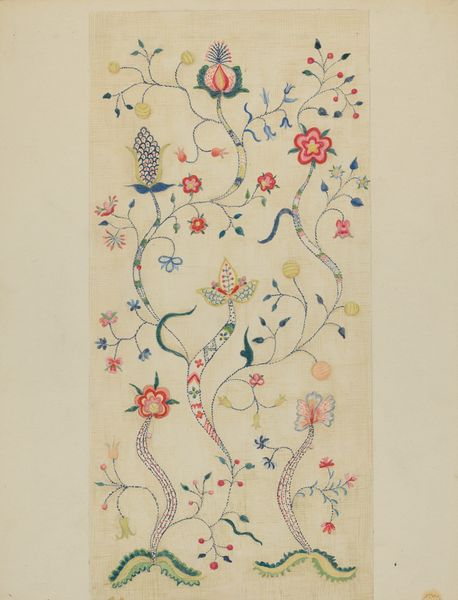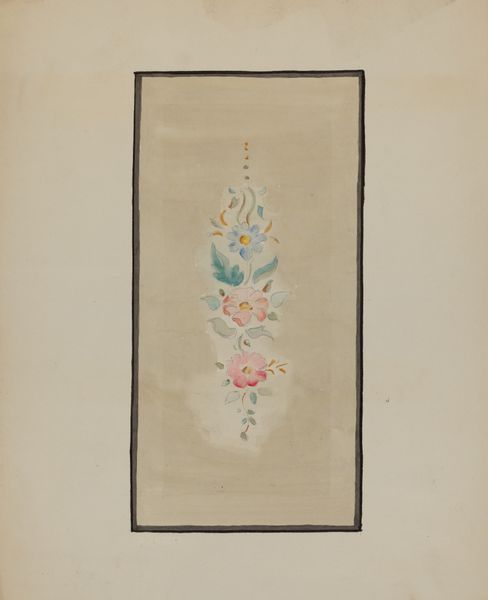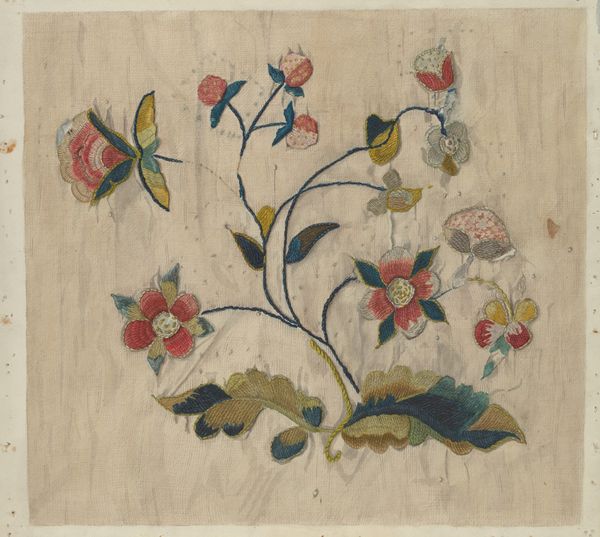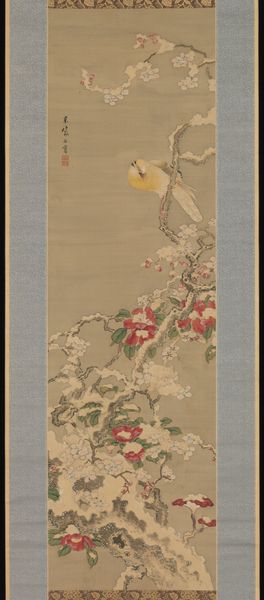
drawing, painting, watercolor
#
drawing
#
water colours
#
painting
#
watercolor
#
watercolor
Dimensions: overall: 28 x 22.8 cm (11 x 9 in.)
Copyright: National Gallery of Art: CC0 1.0
Editor: So, this is "Panel from Hall Lantern," a watercolor piece from around 1936, created by Blanche Waterbury. It strikes me as delicate, almost ephemeral, in its rendering of the floral motif. What historical contexts inform this design, beyond just a decorative piece? Curator: That's a good observation. The lightness of the watercolor and the floral imagery certainly point towards decorative arts traditions popular at the time, especially within domestic spaces. But consider the context of the 1930s. What do you know about the artistic landscape of the era? Was decorative art considered “high art?” Editor: Well, I know the Depression influenced artistic choices. And, often there's a hierarchy; decorative arts are deemed "lesser." Maybe a piece like this provided accessible beauty when resources were scarce, a democratization of art? Curator: Precisely. Mass production became more accessible and popular and even as tastes change over the centuries these sorts of works speak to those evolutions. These designs, like Waterbury's panel, bridge the gap between fine art and the applied arts in the domestic sphere. How does its presence in a 'hall lantern' affect your understanding? Editor: It elevates the everyday. A simple light fixture becomes an art object, transforming domestic space. I guess I see it as resisting the grimness of the time through beauty. Curator: Exactly! Think about the politics of imagery and accessibility; Waterbury's piece offered a visually appealing, yet practical design to a broader audience at a time when art was still highly centralized in academic institutions and exclusive galleries. Do you consider that kind of “public art?" Editor: That's fascinating to consider. It redefines "public" as the intimate sphere of the home, impacting a different kind of audience. It’s a very subtle but powerful political statement through accessible art. Curator: Absolutely. It challenges us to rethink the societal impact and reach of what we traditionally classify as “art,” highlighting the everyday experiences it touches. It reframes who can access, be moved by, or even *own* an image, outside of elites, Editor: It definitely makes me look at decorative arts in a completely new way! Curator: Me too. It always opens a new window of understanding.
Comments
No comments
Be the first to comment and join the conversation on the ultimate creative platform.
